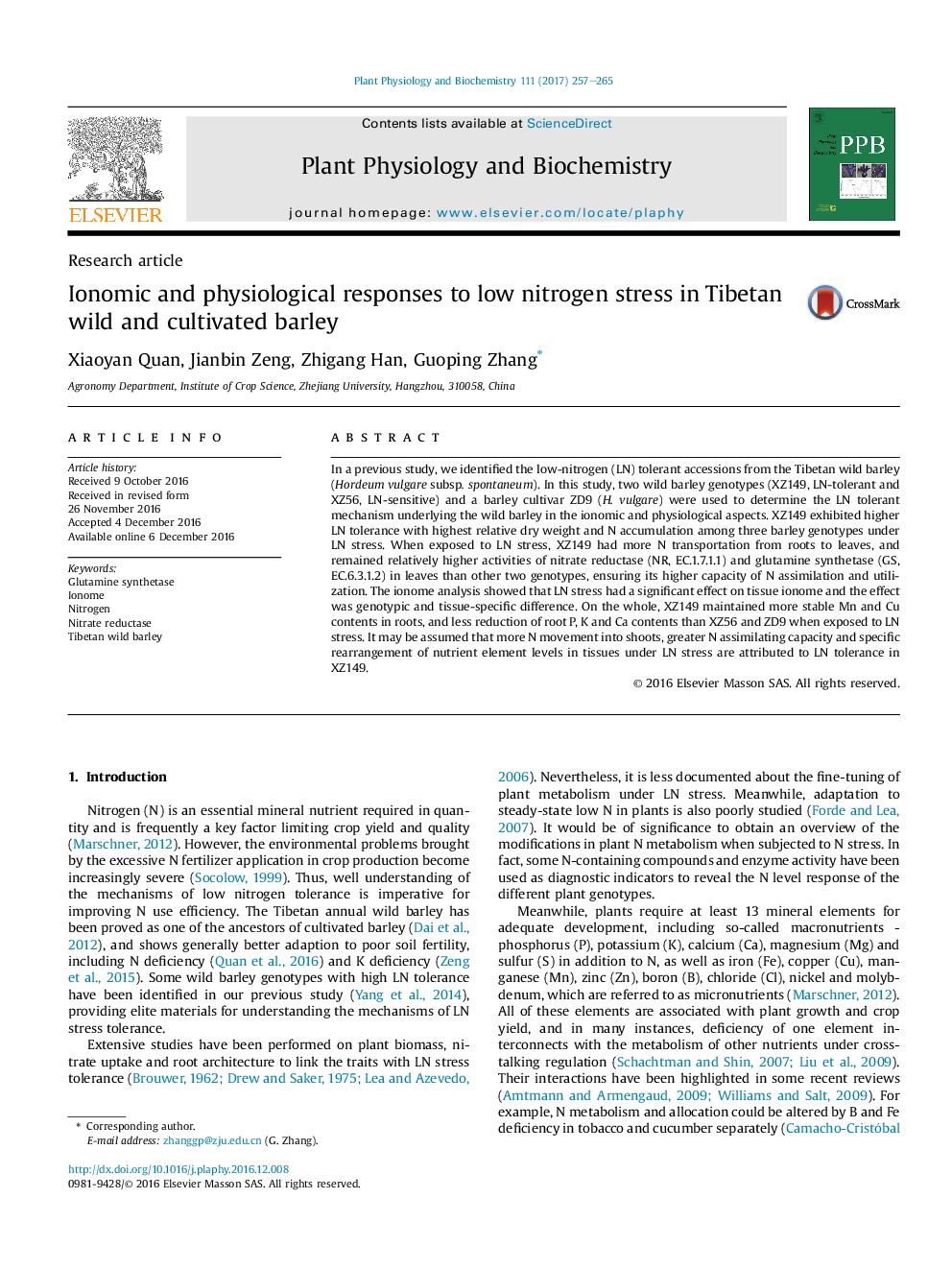| کد مقاله | کد نشریه | سال انتشار | مقاله انگلیسی | نسخه تمام متن |
|---|---|---|---|---|
| 5515550 | 1541910 | 2017 | 9 صفحه PDF | دانلود رایگان |
- Some Tibetan wild barley accessions showed the high low nitrogen tolerance.
- Low-nitrogen tolerant wild barley XZ149 had more N transportation from roots to leaves under LN stress.
- XZ49 also showed relatively higher activities of nitrate reductase and glutamine synthetase in leaves under LN stress.
- XZ149 remained less change in P, K, Ca, Mn and Cu contents in roots than XZ56 and ZD9 under LN stress.
In a previous study, we identified the low-nitrogen (LN) tolerant accessions from the Tibetan wild barley (Hordeum vulgare subsp. spontaneum). In this study, two wild barley genotypes (XZ149, LN-tolerant and XZ56, LN-sensitive) and a barley cultivar ZD9 (H. vulgare) were used to determine the LN tolerant mechanism underlying the wild barley in the ionomic and physiological aspects. XZ149 exhibited higher LN tolerance with highest relative dry weight and N accumulation among three barley genotypes under LN stress. When exposed to LN stress, XZ149 had more N transportation from roots to leaves, and remained relatively higher activities of nitrate reductase (NR, EC.1.7.1.1) and glutamine synthetase (GS, EC.6.3.1.2) in leaves than other two genotypes, ensuring its higher capacity of N assimilation and utilization. The ionome analysis showed that LN stress had a significant effect on tissue ionome and the effect was genotypic and tissue-specific difference. On the whole, XZ149 maintained more stable Mn and Cu contents in roots, and less reduction of root P, K and Ca contents than XZ56 and ZD9 when exposed to LN stress. It may be assumed that more N movement into shoots, greater N assimilating capacity and specific rearrangement of nutrient element levels in tissues under LN stress are attributed to LN tolerance in XZ149.
Journal: Plant Physiology and Biochemistry - Volume 111, February 2017, Pages 257-265
